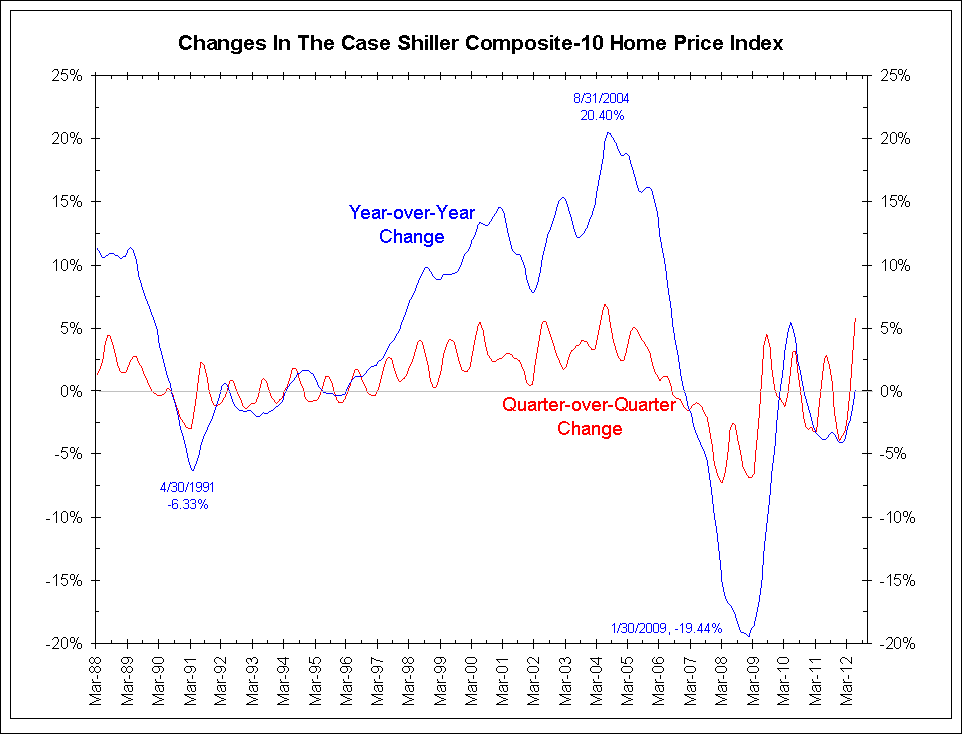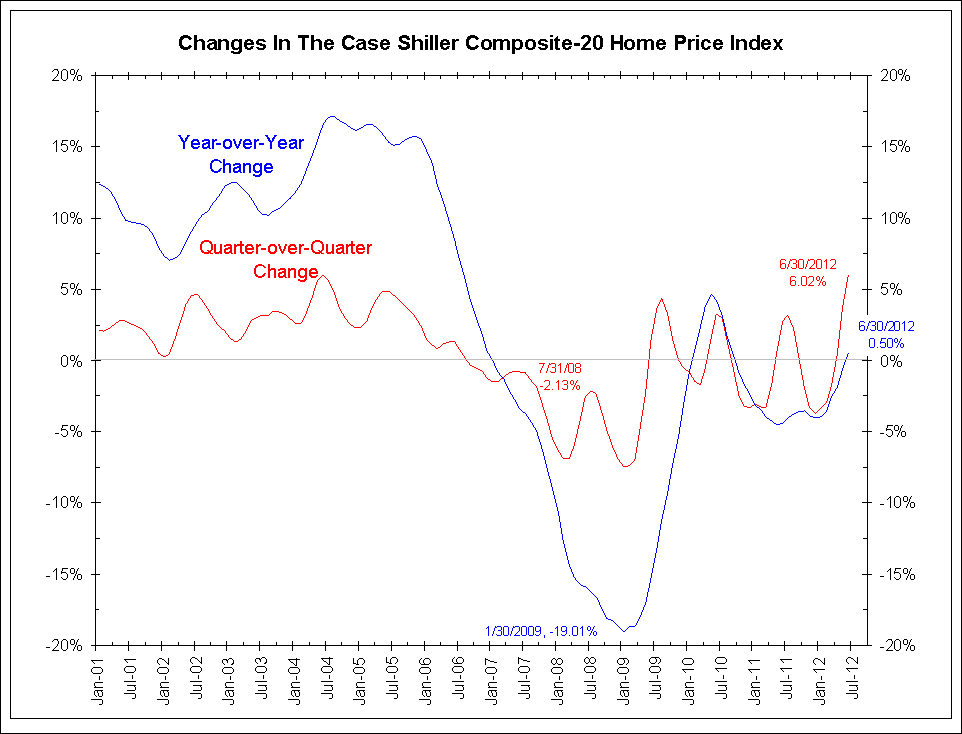Click to enlarge:

~~~

Source: Bianco Research
Why Home Prices Are Rising: The ‘Distressed Share’ (Wall Street Journal)
Tuesday’s measure of June home prices from the S&P/Case-Shiller 20-city index is likely to turn positive when compared with one year ago for the first time in two years, according to a forecast by Zillow Inc. Prices have risen this summer for a simple reason: more buyers have chased fewer properties. But the drop in supply and the boost in demand isn’t the only reason that Case-Shiller is now turning positive. Another related factor is that the share of non-distressed home sales is rising and the share of distressed sales—foreclosures and short sales, mostly—is falling. (Case-Shiller reports prices using a three-month moving average with a two month lag. Several other home price indices have also shown bigger-than-usual price gains for the second quarter.)The decline in the distressed share is important for the housing market, and especially for home-price indexes like Case-Shiller. Because banks are faster to cut prices to unload inventory than are mom-and-pop sellers, home values can fall further as the share of distressed sales rises. This was the case throughout 2008, as home price declines were in virtual free fall amid a cycle of rising foreclosures.
Home Values Rise in U.S. for First Time Since 2010: Economy (Bloomberg.com)
Home prices in 20 U.S. cities climbed in June for the first time since a tax credit boosted sales in 2010, indicating the industry at the heart of the worst recession in the post-World War II era is starting to rebound. The S&P/Case-Shiller index increased 0.5 percent from June 2011 after falling 0.7 percent in the year to May, a report from the group showed today in New York. The last 12-month increase took place in September 2010. Nationally, prices jumped last quarter by the most in more than six years. The lowest mortgage rates on record and a decline in sales of distressed properties may help the market contribute to the economic expansion that is now in its fourth year. A more sustained rebound may require easier lending conditions, which would also give consumers a lift after a report today showed household confidence sank to the lowest level of the year. “Finally, the housing market is forming a bottom,” Mohamed El-Erian, chief executive officer and co-chief investment officer of Pacific Investment Management Co., said on Bloomberg Television’s “In the Loop” with Betty Liu. “That should be welcome. It is not surprising because affordability is so attractive right now.” Stocks were little changed as investors weighed the economic reports ahead of Federal Reserve Chairman Ben S. Bernanke’s speech on the economy in three days. The Standard & Poor’s 500 Index fell less than 0.1 percent to 1,409.3 at the 4 p.m. close in New York.
For more information on this institutional research, please contact:
Max Konzelman
max.konzelman@arborresearch.com
800-606-1872


What's been said:
Discussions found on the web: